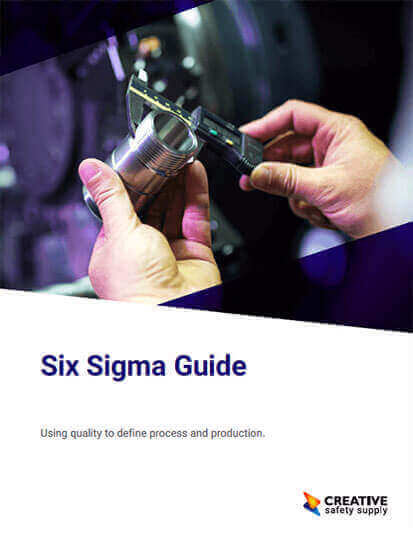
FMEA is an acronym used in Lean manufacturing meaning Failure Modes and Effects Analysis. Failure modes means ways the process may go wrong or not produce the desired/required outcome. Effects analysis refers to identifying and analyzing the consequences of those failures. It is commonly used in Six Sigma and can be helpful when completing a DMAIC project.
FMEA is used for predicting risks by evaluating the severity, occurrence, and detection of risks, prioritizing what risks are most urgent and need to be addressed immediately. It is commonly used in aerospace and automotive industries but can be a helpful tool in any manufacturing setting as it focuses on continuous improvement and ensuring the manufacturing process is completed with as little failure as possible.
A Failure Modes and Effects Analysis is organized in a table with the list of process steps in the first column with each step’s potential failure mode listed in the second column. From left to right will be the potential effects/risks, the potential causes, and the detection or prevention controls that are currently in place. After that, the categories of probability, severity, and detection will be listed next in the table. These categories will then be scored on a scale of 1 to 10 in the following ways:
- Probability/Occurrence: This will be a rough estimation based on analysis, calculations, and looking at similar processes that have been documented. A rating of one means the probability of a failure occurring is extremely unlikely and a rating of ten indicates that failure is almost inevitable.
- Severity: This category is a determination of the severity of worst-case scenario and the potential risk. A score of one indicates low risk of relevant effect on reliability or safety and a score of ten means the severity of failure is considered catastrophic resulting in an inoperative product, extremely unsafe operation, and even the possibility of deaths.
- Detection: This scoring will reflect the probability of a failure being detected by current methods and how long that detection may take. For instance, a low score of one will indicate detection is certain and fault will be caught on test. A higher score indicates that fault or failure will be undetected by operators or maintainers.
After scoring each category, the numbers will be multiplied together (Severity x Occurrence/Probability x Detection) and the resulting product is the Risk Priority Number (RPN). From all the processes listed, they should be ranked from the biggest RPN down to the smallest to create a list of which processes that are ranked for riskiness. Look at the process with the highest score to determine how to address and improve the process. Usually severity cannot be reduced, so the detection and probability categories should be looked at for improvement.
It is important to note that a Failure Modes and Effect Analysis should be conducted and completed by more than one person and that there should only be one FMEA conducted at a time.
Similar Glossary Terms
- PFMEA (Process Failure Modes and Effects Analysis)
- DFMEA (Process Failure Modes and Effects Analysis)
- Risk Priority Number (RPN)
- FRACAS (Failure Reporting, Analysis and Corrective Action System)
- Fault Tree Analysis (FTA)
- RCM (Reliability Centered Maintenance)
- APQP (Advanced Product Quality Planning)
- Job Safety Analysis (JSA)
- Gap Analysis

